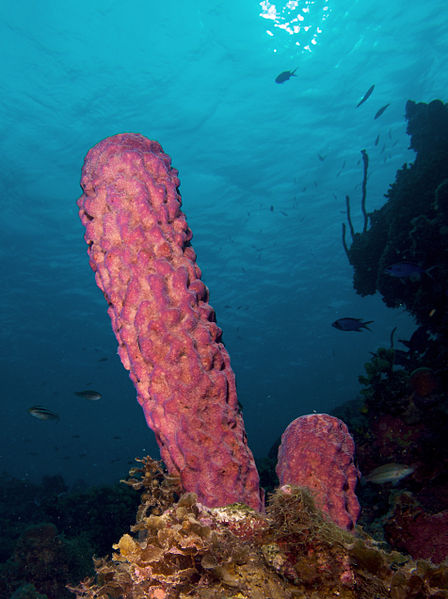
Harmony and Discord Under the Sea
Mutualistic relationships are often formed through the
Graceful Decorator Crab's eating and camouflaging habits,
providing protection, food sources, and even mobility to
stationary creatures.
Sedentary animals such as bryozoans, hydroids, and sponges
are frequent tools used by the crabs to conceal themselves
but these animals benefit from this relationship as well
(Weis 2012). To learn
about similar types of sponges that are used by the graceful
decorator crab check out
sea sponges and
marine sponges.
_with_sponge.jpg) These
often immobile animals placed on the backs of the crabs are
now allowed access to new water currents and food that was
previously unattainable.
A prevalent example of this symbiotic relationship is
the way in which the crabs decorate themselves with algae.
While the algae gets a relatively safe and secure
place to live the crab is well hidden and also receives a
food source in the algae (Weis 2012).
These
often immobile animals placed on the backs of the crabs are
now allowed access to new water currents and food that was
previously unattainable.
A prevalent example of this symbiotic relationship is
the way in which the crabs decorate themselves with algae.
While the algae gets a relatively safe and secure
place to live the crab is well hidden and also receives a
food source in the algae (Weis 2012).
Feeding and Commensalism Relationship
Other than algae, the Graceful Decorator Crab's diets
consists of plankton, small and dead animals, and have even been
known to occasionally eat other crabs (Larson).
Using their long pincers, these omnivores are able to
extract food from crevices and the sea floor or can simply
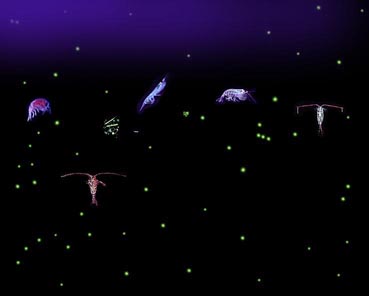 take
the food growing on their back (Cattle Point).
These powerful pincers
are also able to crack hard shells like those of other
crustaceans. During
the course of feeding, Oregonia gracilis often times drops
morsels of food, in turn feeding and supporting other creatures
around them. One
such example would be anemones, which provide an important form
of protection from many various predators.
A specific anemone that has similar qualities to the ones
that the graceful decorator crab interacts with is the
ritteri anemone.
These crabs have even been observed picking up and waving
the anemones stinging tentacles at oncoming predators (Weis
2012).
take
the food growing on their back (Cattle Point).
These powerful pincers
are also able to crack hard shells like those of other
crustaceans. During
the course of feeding, Oregonia gracilis often times drops
morsels of food, in turn feeding and supporting other creatures
around them. One
such example would be anemones, which provide an important form
of protection from many various predators.
A specific anemone that has similar qualities to the ones
that the graceful decorator crab interacts with is the
ritteri anemone.
These crabs have even been observed picking up and waving
the anemones stinging tentacles at oncoming predators (Weis
2012).
Predators
Threats often encountered by Oregonia gracilis are fish,
sea otters, cephalopods such as the
gaint pacific octopus, and other various predacious animals. Being a bottom dwelling fish in the crabs main habitat,
pacific
halibut is one of the Graceful Decorator Crab's most
common foes. Both
live in the cold, northern waters of the Pacific making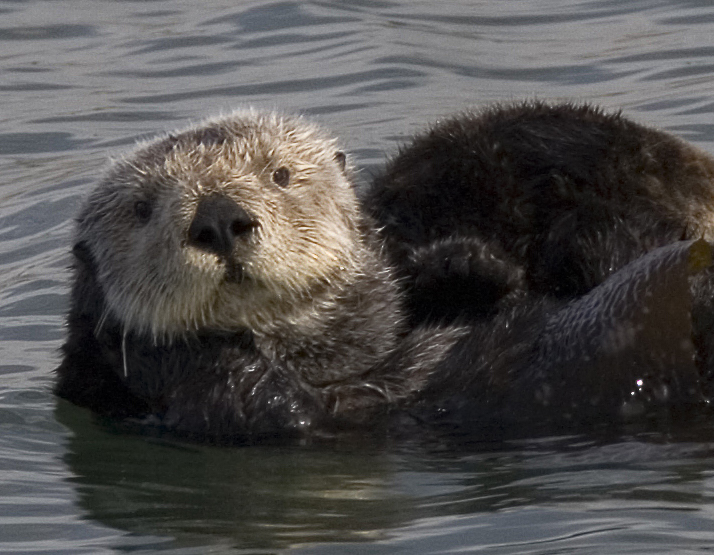 encounters a common occurrence.
encounters a common occurrence.
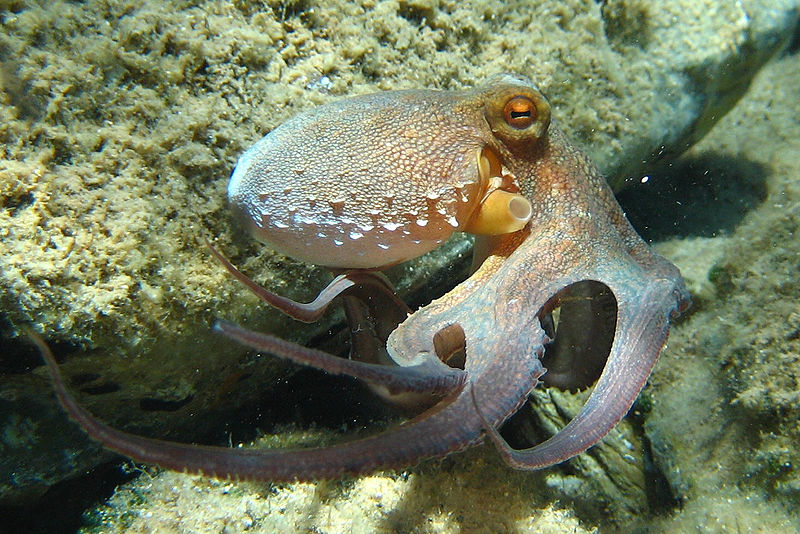 Another prevalent hazard encountered at the bottom of the
ocean are cephalopods like octopi. (Walking Sideways 2009).
Even other crabs have been known to attack and eat them
making their choice in camouflage even more critical.
Another prevalent hazard encountered at the bottom of the
ocean are cephalopods like octopi. (Walking Sideways 2009).
Even other crabs have been known to attack and eat them
making their choice in camouflage even more critical.
Parasitic Relationships
While the crabs may spend their time worrying about
halibut or cephalopods, there are other organisms which pose
just as great, if not more of a threat to them; parasites.
Some of the most common parasites found on crabs are
rhizocephalans, a type of parasitic barnacle (Weis 2012).
Sacculina is a rhizocephalan which invades the crab
through vulnerable areas such as joints with soft cuticles and
grows from within the crab.
Much like roots of a tree, Sacculina invades every tissue
until it has completely taken over the crab and consumed the
reproductive system (Weis 2012).
No longer able to effectively reproduce, the crab is only
able to excrete the parasites larva instead of their own.
Some rhizocephalans are even able to alter the nature of
the crabs so that they take over as caregivers to the barnacle's
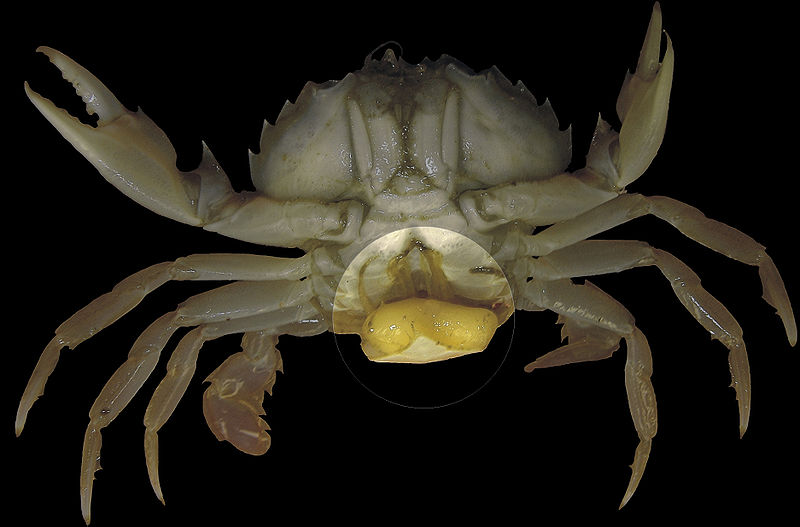 eggs,
essentially taking care of them as if they were their own.
Other parasites have been known to make crabs sterile as
well such as entoniscids, a parasitic isopod (Weis 2012).
Often times when these are present in a population, crab
numbers are decimated.
eggs,
essentially taking care of them as if they were their own.
Other parasites have been known to make crabs sterile as
well such as entoniscids, a parasitic isopod (Weis 2012).
Often times when these are present in a population, crab
numbers are decimated.
Although not found on the dinner plate as with other crabs, interaction between humans and the Oregonia gracilis is possible, albeit sparingly. Regularly found in the intertidal waters of the Pacific, humans with a keen eye may have the chance to catch a glimpse of one elaborately camouflaged looking for its next meal. Some decorator crabs are even available for purchase to be kept in aquariums although it is most likely best to have in-depth knowledge of their behavior and habits before doing so.
